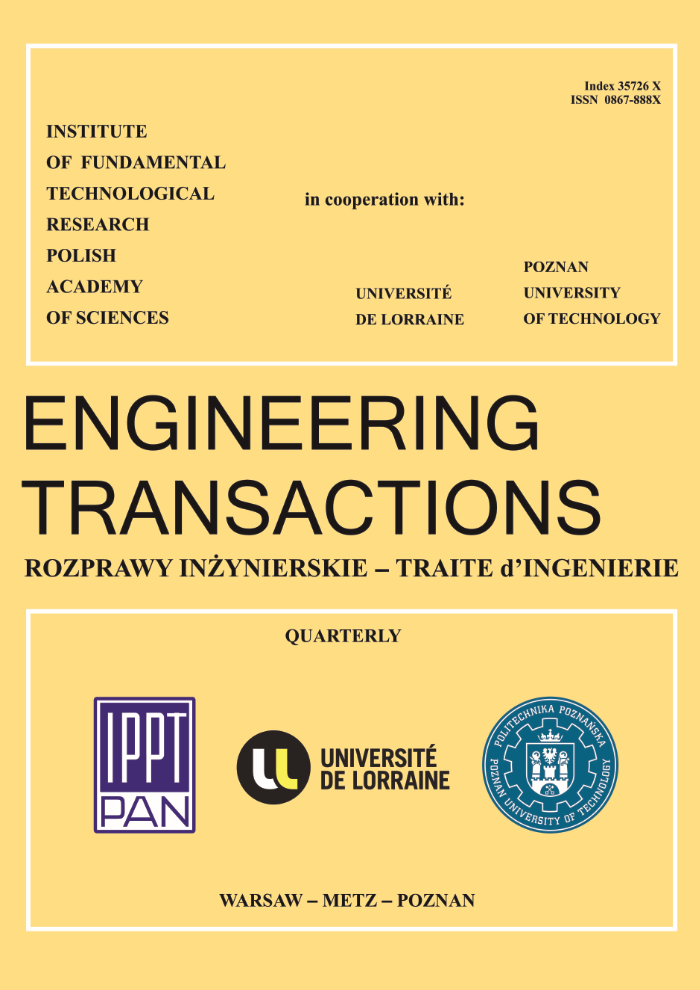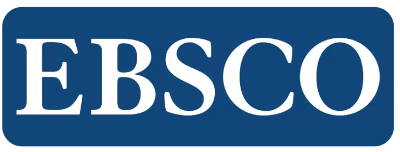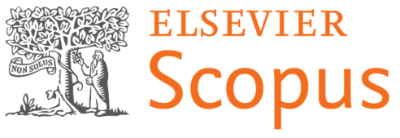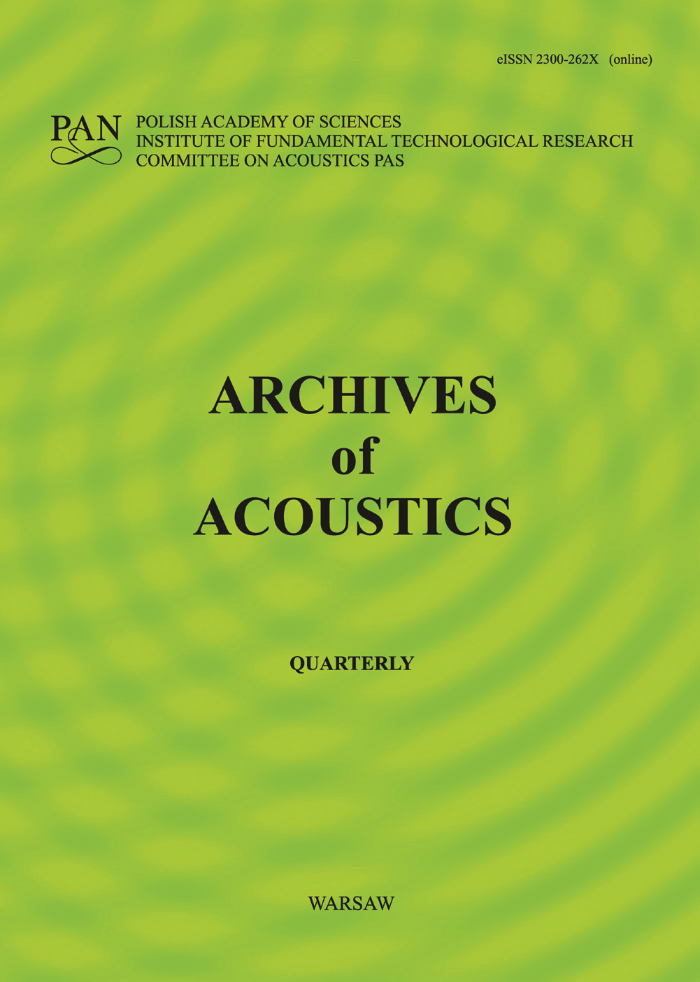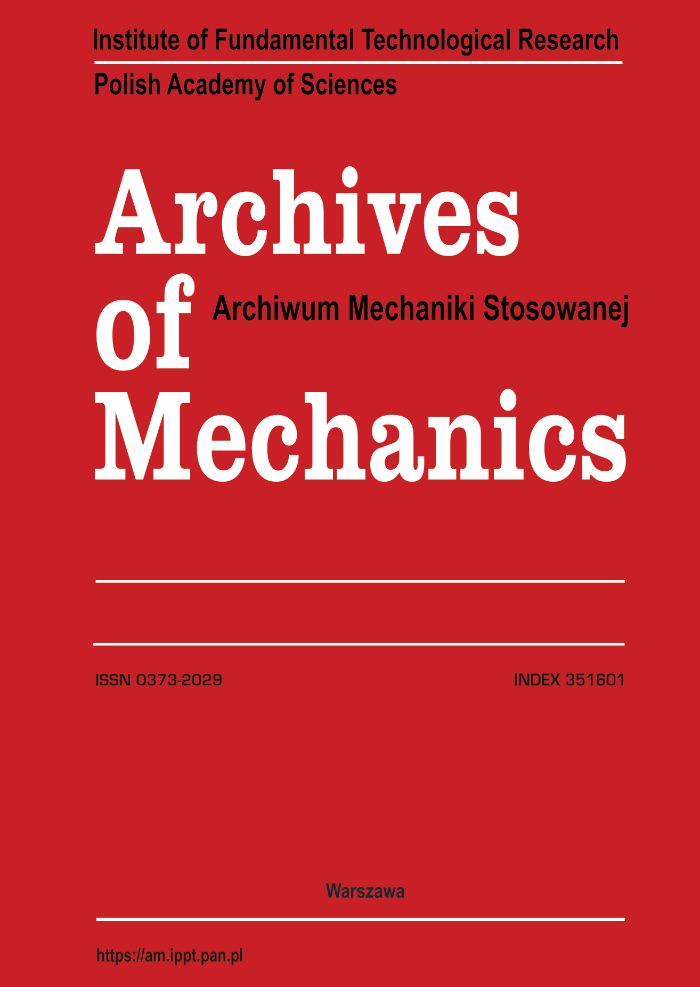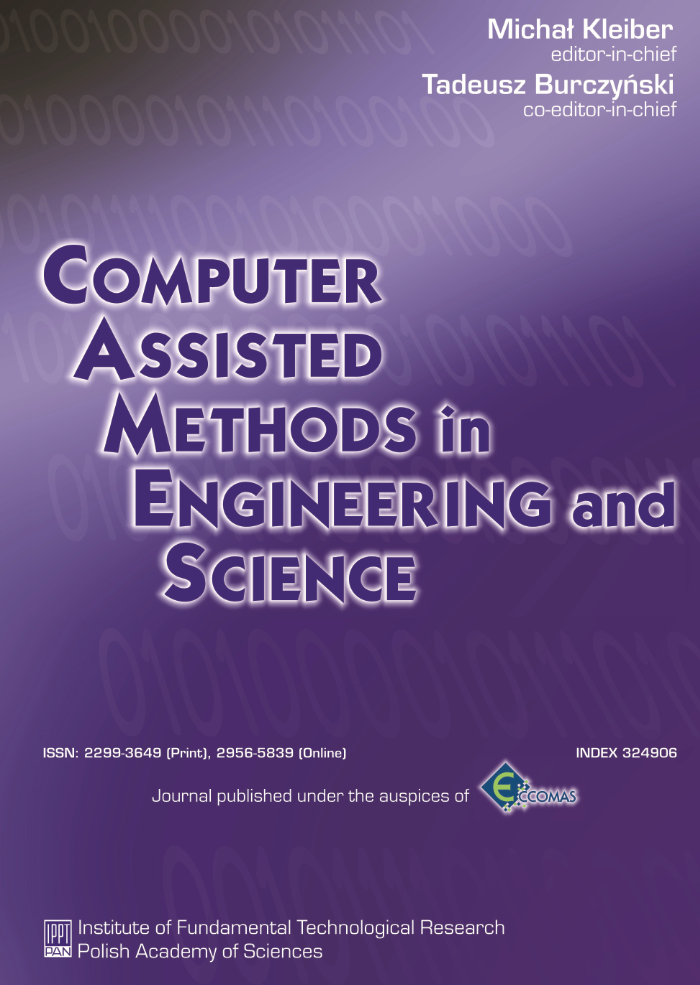Author Guidelines
About the Articles
The periodical Engineering Transactions (formerly Rozprawy Inżynierskie) presents original papers which should not be published elsewhere.
The language of the journal is English. As a rule, the volume of a paper should not exceed 40,000 typographic signs, that is about 20 typewritten pages, format A4 (210×297 mm). The papers should be submitted in pdf format by an on-line procedure (including text, all figures, tables, and references). Manuscripts should be original and should not be published previously or simultaneously submitted elsewhere, neither in whole, nor in part. Submitted papers must be written in good English and proofread by a native speaker. Metadata of all authors should be given on the journal website (including ORCID numbers).
All articles (i.e., research papers, review papers, technical notes, in memoriam, chronicles, calendars of events, book reviews, and erratum) are open submissions, indexed, and peer-reviewed. Only in memoriam, chronicles, calendars of events, book reviews, and erratum are not peer-reviewed.
Submission declaration
By submitting the article to the Engineering Transactions journal, you declare that the article has never been published before, is not under consideration in other journals, and what is the most important – the article is original, and you have not been using AI to write the article.
Artificial Intelligence usage
Please note, this only refers to the writing process, and not to the use of AI tools to analyze and draw insights from data as part of the research process, or AI tools used to check grammar, spelling, and references. Moreover, it does not apply when AI is a part of a research design or methods (e.g., AI in mechanics research, stress imaging).
The articles fully written by AI will be rejected during the initial phase, before the review process. The use of AI to create images, graphs, or photographs is not permitted. The next submitted articles will never be accepted.
The Engineering Transaction journal does not allow the use of AI by reviewers or editors in the peer-review and manuscript evaluation process, as it is against the journal's policies and ethics.
In the case of using AI as a part of a research design or methods, such use must be described in a reproducible manner in the methods section, including the name of the model/tool, version, extension numbers, and manufacturer.
Authorship
The Author(s) explicitly reserve(s) copyright and all other intellectual property rights in the article except as specifically provided in aforementioned licence.
Preparing Manuscript
Each manuscript must be set in accordance with the norms established by the Editorial Office. Special importance is attached to the following directions:
- The title of the paper should be as short as possible.
- The authors of the paper should give full names (not only initials) and surnames, affiliations, addresses for correspondence, and e-mails of all authors. The corresponding author email should be pointed out. Please also provide the ORCID number (if exist).
- The authors should enclose an abstract (summary) of the paper. The volume of the abstract should not exceed 150 words (1000 signs with spaces). The Abstract should be informative and briefly inform about motivation, problem statement, methodology, and results.
- Keywords should be given.
- It is also desirable to include a list of notation used in the paper.
- The text should be preceded by a brief introduction.
- Only such formulae should be numbered to which the author refers throughout the paper, and also the resulting formulae.
- All the notation should be written very distinctly. Special care must be taken to write small and capital letters as precisely as possible (this especially applies to the designations of the letters i and O, b and P, s and S, z and Z, as well as zero 0 and o and O).
- References in the text of the paper should be given in Arabic numerals in square brackets.
- The reference list could be arranged in alphabetical order or in order of appearance of citations in text.
- At the end of manuscript should be included (in the order given here): Acknowledgements/ Funding Acknowledgement (if relevant), a Declaration of Conflicting Interests, and References.
- A Declaration of Conflicting Interests should be included under the heading 'Declaration of Conflicting Interest'. If no conflict exists, authors should include information 'The Author(s) declare(s) that there are no known competing financial interests or personal relationships that could influence the work reported in this paper’.
Peer Review Process
Following long tradition, all articles are peer reviewed and our expert referees ensure that the papers accepted for publication comply with high scientific standards.
- Submissions are initially assessed by the editor for suitability for the journal scope and standards.
- Each deemed manuscript is evaluated at least by two independent reviewers from outside the author's affiliation.
- The Journal provides a single blind peer review process: names of reviewers are not revealed to authors. Reviewers are asked to declare no conflict of interest between them and authors, by either the direct personal relationship or research collaboration in the last two years preceding the time of review. See also Conflicts of Interest Policy.
- Reviewers are asked to do the review within four weeks.
- The written review contains a clear proposal for the publication or rejection of the scientific article in accordance with the conditions of admission.
- On the journal website, the eligibility criteria for the review of articles and for their acceptance or rejection are available.
Open access policy
This journal provides immediate open access to its content on the principle that making research freely available to the public supports a greater global exchange of knowledge.
Copyright notice
Copyright on any open access article in the Engineering Transactions published by the Institute of Fundamental Technological Research Polish Academy of Sciences is retained by the author(s).
The authors grant the Institute of Fundamental Technological Research Polish Academy of Sciences a license to publish the article and identify themselves as the original publisher.
The authors also grant any user the right to use the article freely as long as its integrity is maintained and its original authors, citation details, and publisher are identified.
The Creative Commons Attribution 4.0 International CC BY 4.0 formalizes these and other terms and conditions of publishing articles.
Exceptions to copyright policy
For the articles that were published between 2019– 2024, the policies are as follows: The Creative Commons Attribution License-ShareAlike 4.0 formalizes these and other terms and conditions of publishing articles: https://creativecommons.org/licenses/by-sa/4.0/.
For the articles which were previously published, before year 2019, policies that are different from the above. In all such, access to these articles is free from fees or any other access restrictions.
Permissions for the use of the texts published in that journal may be sought directly from the Editorial Office of Engineering Transactions.
Privacy statement
The names and email addresses entered in this journal site will be used exclusively for the stated purposes of this journal and will not be made available for any other purpose or to any other party.
Journal fees
There is no cost associated with the publication of articles in the Engineering Transactions.
Guidelines for Preparing a Manuscript
Submission of manuscript
Since the Editorial Board does not charge for the publication of articles, we require authors to strictly follow the guidelines given below. Please take the time to prepare the manuscript to be readable. This is essential. Articles that fail to meet the formal requirements will be disqualified during the initial stage and will not be forwarded for review.
At the submission stage, all metadata concerning authors should be provided (including affiliation and email). Both in the metadata on the journal’s website and in the header of your manuscript, provide the metadata in accordance with what you provided in the ORCID database.
Failure to provide the necessary information and format the manuscript may be a reason to reject the work. Please let us respect each other’s time and work.
Each manuscript is initially evaluated by the Editor and then allocated to an Associate Editor according to a specific subject area. Upon receiving the list of potential reviewers, the Associate Editor’s forwards it to reviewers. The Editor and the Associate Editors make the final recommendation. The reviewers’ opinions are crucial for the Editorial Committee to decide whether the paper can be accepted for publication or not.
Style and format of manuscript
- Manuscripts intended for publication in the Engineering Transactions should be submitted in PDF format.
- Submitted papers must be written in good English and proofread by a native speaker.
- The whole manuscript (including reference list) should not exceed 40,000 typographic signs (about 20 typewritten pages). Longer papers may be rejected.
- The manuscript header should include: title, full names (not only initials) and surnames of all authors, affiliations, addresses for correspondence, and e-mails of all authors. The corresponding author email should be pointed out. Please also provide the ORCID numbers (if exist).
- The title of the paper should be as short as possible.
- A brief abstract must be included (maximum 150 words or 1000 typographic signs with spaces). Abstract should contain a brief presentation of the aim, methods, results and conclusions concerning presented research.
- Keywords should be given. Separate them with a semicolon.
- A list of notation should be inserted after keywords and before the first Section.
- Both manuscript pages and lines should be numbered(it is obligatory).
- Text should be submitted with double-lined spacing and in a 12 point font size.
- Only such formulae should be numbered to which the author refers throughout the paper, and also the resulting formulae.
- All the notation should be written very distinctly. Special care must be taken to write small and capital letters as precisely as possible (this especially applies to the designations of the letters i and O, b and P, s and S, z and Z, as well as zero 0 and o and O).
- References in the text of the manuscript should be given in Arabic numerals in square brackets.
- Supplementary material that is relevant to the manuscript and its understanding should be added at the end of the manuscript as an “Appendix”.
- At the end of manuscript should be included (in the order given here): Appendix (if needed ), Acknowledgements/ Funding Acknowledgement (if relevant), a Declaration of Conflicting Interests, and References.
- A Declaration of Conflicting Interests should be included under the heading 'Declaration of Conflicting Interest'. If no conflict exists, authors should include information 'The Author(s) declare(s) that there are no known competing financial interests or personal relationships that could influence the work reported in this paper’.
- The reference list could be arranged in alphabetical order or in order of appearance of citations in text.
After acceptance, authors must submit all source material (see especially information about Figures). Authors can use their preferred manuscript-preparation software, including for example Microsoft Word or any variant of TeX. The journal itself is produced in LaTeX, so accepted articles prepared using other software will be converted to LaTeX at production time.
Detailed Information on Individual Elements of the Manuscript
Nomenclature
- All the notation should be written very distinctly. Special care must be taken to write small and capital letters as precisely as possible (this especially applies to the designations of the letters o and O, p and P, and others whose shapes of the lowercase and uppercase letters differ slightly, as well as zero 0 and o and O).
- Do not use an abbreviation and the full word interchangeably. Give the full name where it first appears, and enter the abbreviation in parentheses. Then use the abbreviation. The exception is: using the abbreviation in a subtitle. If you used full words and abbreviations in the abstract, they have to appear once again in the main text.
- Check whether the spelling of the phrase is uniform in all places. If doubted, check the sources to see how specific phrases are entered.
Math formulae
- The formulae to be numbered are those referred to in the paper, as well as the final formulae.
- The formula number should be written on the left-hand side of the formula in round brackets.
- The formula number consists of two figures: the first represents the section number and the other the formula number in that section. Thus, the division into subsections does not influence the numbering of formulae. The formula number should be written on the left-hand side of the formula; round brackets are necessary to avoid any misunderstanding.
- If a number is given to several formulas placed one below the other(set of formulas), then when citing one of these formulas in the text, the number of the formula in this set should also be given.For instance, if the author refers to the third formula in the set (2.1), a subscript should be added to denote the formula, viz. (2.1)3.
- All notations should be written clearly. Special care must be taken to write small and capital letters as precisely as possible (this applies mainly to the letters c and C, s and S, and others whose shapes of the lowercase and uppercase letters differ slightly).
- Vectors should be denoted by boldfaced
- Matrices should be denoted by boldfaced type, e.g., A, or in square brackets, g., [aij].
- Trigonometric functions are denoted by sin, cos, tan and cot; inverse trigonometric functions – by arcsin, arccos, arctan and arccot; hyperbolic functions are denoted by sinh, cosh, tanh and coth. All functions must not be written in italics.
Figures
- Figures should be numbered consecutively throughout the manuscript.
- Each drawing should be captioned.
- The axes of the graphs must be described and the units must be provided.
- Photographs must be high-quality – with resolution no lower than 300 dpi.
- In the case of diagrams and graphs, the use of square brackets is required for unit descriptions in axis. The descriptions of the axes must be written in Times New Roman font (no boldfaced type) and its size adjusted proportionally. Mathematical symbols in the figures should be in italic if correspond to such symbols used in the text.
- When preparing figures, please remember about the requirements for figure files that should be sent to the Editorial Office after the manuscript has been accepted for publication. See Final decision and next step.
Tables
- Tables should be numbered consecutively throughout the manuscript.
- Each table should have a title.
- There should be no empty cells in the table.If there is no value, a dash (–) should be inserted.
Instructions for citation and bibliographic references
Citations
Citations in the text of the manuscript should be given in Arabic numerals in square brackets.
Reference list
The reference list could be arranged in alphabetical order or in order of appearance of citations in text.
- Book, encyclopaedia, and ISO/ASTM standards titles should be italicized.
- Book
Surname of the author(s), initial(s), Title of the Book, ed. number (edition number if later than the first), Publisher Name, Place of Publication, year, DOI link (if exist).
Examples:
Nayfeh A.H., Mook D.T., Nonlinear Oscillations, John Wiley & Sons, New York, 2008.
Pęcherski R.B., Viscoplastic Flow in Solids Produced by Shear Banding, John Wiley & Sons, Ltd., Hoboken, NJ., 2022, https://doi.org/10.1002/9781119618645.
- If the book was published in language other than English.
Surname of the author(s), initial(s), Title of the Book translated to English [in: Oryginal language: original title of the publication], ed. number (edition number if later than the first), Publisher Name, Place of Publication, year, DOI link (if exist).
Example:
Leyko J., General Mechanics. Vol. 2. Dynamics, [in Polish: Mechanika ogólna. Tom 2. Dynamika], 9th ed., WN PWN, Warszawa, 2011.
- Information about editors of book.
Surname of the editor(s), initial(s) [Ed./Eds], Title of the Book, Volume (if there are more than one), ed. number (edition number if later than the first), Publisher Name, Place of Publication, year, DOI link (if exist).
Examples:
Crocker M.J. [Ed.] (2007), Handbook of Noise and Vibration Control, John Wiley & Sons, Inc., New York.
Klinke R., Hartman R. [Eds] (1983), Hearing – Physiological Bases and Psychophysics, Springer, Berlin, Heidelberg, New York, Tokyo.
- Chapter in edited book.
Surname of the author(s) of the chapter, initial(s), Title of chapter, [in:] Title of the Book, Editor(s) surname, initial(s) of the Editor(s) name [Ed./Eds], pp. start and end of chapter page numbers, Publisher Name, Place of Publication, year, DOI link.
Example:
Blanke M., Fault-tolerant control systems, [in:] Frank P.M. [ed.], Advances in Control, pp. 171–196, Springer, London, 1999, https://doi.org/10.1007/978-1-4471-0853-5_6.
- Standards.
Examples:
ASTM International, ASTM D695-02: Standard Test Method for Compressive Properties of Rigid Plastics, West Conshohocken, PA, 2002.
BS 8500-2:2006: Concrete – Complementary British Standard to BS EN 206-1 Part 2: Specification for constituent materials and concrete, British Standards Institution, 2015.
- Journal article: Provide names of all authors. Write directly page numbers (not preceded by p. or pp.). If there are no page numbers, provide the article number. If the article is originally in language other than English, do exactly the same thing as in book, add after a title: [in oryginal language: title in the original language]. A DOI number is required if one has been assigned. Please note that most journal publishers have assigned DOI numbers to all of articles in their journals, even those published many years ago.
Surname of the author(s), initial(s), Title of the article, Title of the Journal, Volume number [boldfaced] (issue number): start and end page numbers of article or article number, year, DOI link or web URL (if applies).
Examples:
Al-Obaidi A.J., Tariq A., Dalfi H., Influence of nanoparticles reinforcements on the mechanical performance and tribological properties of aluminum 6082 alloys, Engineering Transactions, 70(4): 391–405, 2022, https://doi.org/10.24423/EngTrans.2239.20221012.
Nanayakkara O., Gunasekara C., Sandanayake M., Law D.W., Nguyen K., Xia J., Setunge S., Alkali activated slag concrete incorporating recycled aggregate concrete: Long term performance and sustainability aspect, Construction and Building Materials, 271: 121512, 2021, https://doi.org/10.1016/j.conbuildmat.2020.121512.
Wang C.G., Tan L.D., Study on a virtual prototype based hay highly compressing process [in Chinese], Transactions of the Chinese Society for Agricultural Machinery, 36(3): 99–101, 2005.
- Conference paper in published proceedings (do not forget about DOI if it exists).
Author(s) surname, initial(s), Title of the paper, [in:] Title of the Proceedings Book, Editor(s) surname, initial of the Editor(s) name, initials [Ed./Eds], pp. start and end of paper page numbers, Publisher Name, Place of Publication, year, DOI or web URL (if applies).
Example:
Kuendig A., Schoenfeld H., Voigt Th., Kurtcuoglu K., Yoshinaga S., Saji N.,Shimba T., Honda T., Chapter 247: The cold-compressor systems for the LHC cryoplants at CERN, [in:] Proceedings of the Twentieth International Cryogenic Engineering Conference (ICEC20), Zhang L., Lin L., Chen G. [Eds.], pp. 1043–1046, Elsevier Science, Oxford, 2005, doi: 10.1016/B978-008044559-5/50250-7.
- Electronic sources: If no date is shown on the document, authors should use n.d. (no date). If the author is not given, authors should begin the reference with the title of the document. If a document is part of a large site such as a university or a government department’s website, give the name of the parent organization and the relevant department before the URL. Do not write the web address (URL) within the text of the paper, it should appear only in the reference.
Author(s) surname, name initials, Title, Publisher Name, year, URL (access: YYYY.MM.DD).
Examples:
Tailer P., The Spiral Pump. A High Lift, Slow Turning Pump, 2005, http://lurkertech.com/water/pump/tailer/ (access: 2023.10.12).
International Renewable Energy Agency (IRENA), Renewable Energy Technologies, https://www.irena.org/Data/View-data-by-topic/Capacity-and-Generation/Technologies, 2022 (access: 2023.10.14).
Submitting Your Manuscript
Submission checklist
As part of the submission process, authors are required to check off their submission’s compliance with all the following items, and submissions may be returned to authors that do not adhere to these guidelines.
- Full names of all authors with their affiliations and e-mail addresses, and other needed information are provided on manuscript header.
- The text is double-spaced; 12 point font; italics or bold is employed if necessary; all illustrations, figures, and tables are places within the text at the appropriate part of the text, rather than at the end; the lines and pages are numbered.
- The text adheres to the stylistic and bibliographic requirements outlined in the Author Guidelines.
- The manuscript has page and line numbers (it is obligatory).
- DOI numbers or URLs for the references have been provided (if exists).
- Manuscript was saved in PDF format.
Suggest reviewers
The authors have to prepare a list of 3–5 names of suggested reviewers together with their affiliations and e-mail addresses, and a brief justification for the choice. Please consider scientists from scientific institutions besides your own country and, the most importantly, scientists who specialize in the field you write about; suggested reviewers should be affiliated with other scientific institutions than the affiliations of the author.
Information about potential reviewers can be provided in the "To the editor" field.
Submit online
Manuscripts intended for publication in the Engineering Transactions should be submitted in PDF format via an on-line procedure.
The online submission is easy and quick – in 5 steps you are able to submit the manuscript to the system.
After Receiving a Final Decision
Final decision and next step
After acceptance, Authors will need to send Word or LaTeX source files of the final version of articles as well as original source files of figures (drawings/diagrams/graphs or photographs).
All figure/photo files must be high-quality – with resolution no lower than 300 dpi.
For diagrams and graphs vector EPS or vector PDF files are the most useful. Most drawing and graphing packages (e.g. Mathematica, Adobe Illustrator, Corel Draw, MATLAB) allow the user to save files in one of these formats. Make sure that what you are saving is a vector graphics and not a bitmap.
Please also include the original data for any plots. This is particularly important if you are unable to save Excel-generated plots in vector format. Saving them as bitmaps is not useful; please send the Excel (.xls) spreadsheets instead.
Each figure should be saved in separate file – the name of the file has to be numbered.
Pack all figure files into a single archive (zip, tar, rar or other format) and then upload on the magazine web site.
Proof corrections
After formatting your manuscript into Engineering Transactions format, your article will be sent to you for authors’ proofreading. Read the article carefully and please thoroughly review each equation and/or symbol employed in your manuscript to ensure the absence of any inconsistencies.
Publishing agreement
With proofreading you will receive an open access licence to publish to sign. This licence is sorely important for us, without it we are not going to publish the article. The licence is about the Creative Commons Attribution 4.0., which allows users to distribute, remix, tweak, and build upon your work, even commercially, as long as they credit you for the original creation.
By signing the licence, the author(s):
- warrant that the article is original, is not under consideration
- has/have full authority to enter into this licence and in granting rights to IPPT PAN are not in breach of any contract or other obligation;
- has/have taken due care to ensure the integrity of the article;
- explicitly reserve(s) copyright and all other intellectual property rights in the article except as specifically provided in this licence.
Open access
After your final corrections, the article will be published as an online first article with a DOI number. Both online first and final publications are open access, without any hidden fees.
